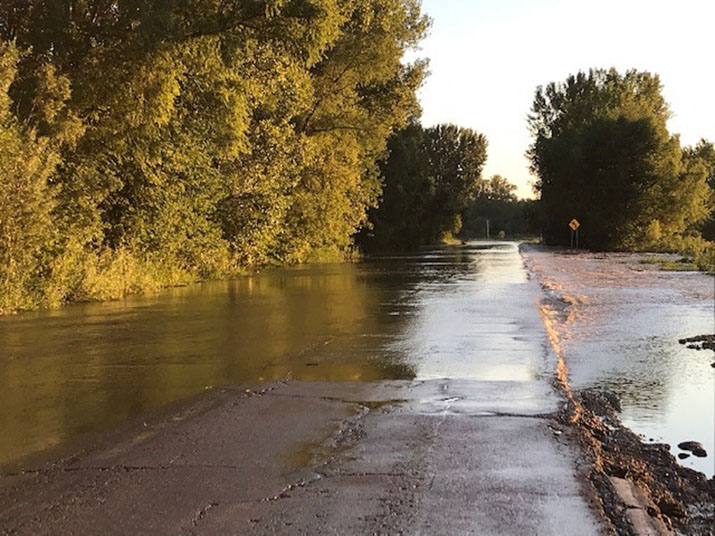Mega rain and the case for flood insurance
Aug. 10, 2020

Minnesota’s most recent mega rain took place in the southern part of the state at the end of July. It caused several road closures, like this one on Highway 93 near Henderson.
No, mega rain is not the signature weapon of the latest comic book supervillain – and no superhero can help you recover from the damage it can inflict. Mega rain is an actual meteorological phenomenon occurring more and more often in Minnesota. And instead of a superhero, you’ll need flood insurance to bounce back.
But let’s start with a definition. To be classified as mega rain, a storm has to cover at least 1,000 square miles with at least 6 inches of rain, with a core of 8 inches or more. It’s not just about how much rain falls, but about how widespread it is. In a state where rivers breaching their banks are the most common cause of catastrophic flooding, it’s important to realize that mega rain can create the same type of disaster.
Experts have been keeping track of mega rains since the 1860s, but a phenomenon that was once relatively rare has become much more common. For example, according to the Department of Natural Resources, only six mega rain events happened in the 26 years from 1973 to 1999. But the less than 20 years from 2000 until now have seen 11 mega-rain events.
The most recent mega rain took place on July 25 and 26 over a wide swath of southern Minnesota. Over a period of 6 to 12 hours, at least 6 inches of rain fell. The highest confirmed amount was 11.5 inches. Fortunately, there were no injuries or deaths, and not even any significant damage – but the damage still wasn’t zero, and the damages are still being assessed. The good fortune is being chalked up to good floodplain management and the relatively low river levels and dry soil prior to the storm.
Most mega rains prove much more problematic, though. You may recall the Twin Cities Superstorm of 1987, which registered 9.15 inches of rain. The storm, which took place over July 23-24, became the greatest calendar day of precipitation on record for the Twin Cities area. It fell in mostly residential areas and incurred $25 million in property damage (that’s about $56.7 million in today’s money).
Mega rains can be just as dangerous to both property and people as river floods because they’re harder to predict and thus give us less time to prepare. That’s why it’s important to have flood insurance. Your home insurance policy doesn’t cover flooding — it may not even cover water or sewer backups — so looking into a flood insurance policy is a wise move. Don’t wait until there’s another storm on the horizon, though, because it takes 30 days for coverage to start.
What happens if a mega rain (or any other type of flooding) comes along and you don’t have flood insurance? You’ll have to pay for it out-of-pocket or take out a disaster loan, which you’ll have to pay back with interest. In cases where FEMA grants are offered and you qualify for one, you’re likely to get only $5,000. And considering that the average flood insurance claim is $90,000, a FEMA grant won’t be nearly enough to cover the damages.
Where mega rain and other flooding events are concerned, flood insurance is the best way to be your own superhero. The sooner you get a policy, the safer you’ll be from the damage that catastrophic flooding can bring.

